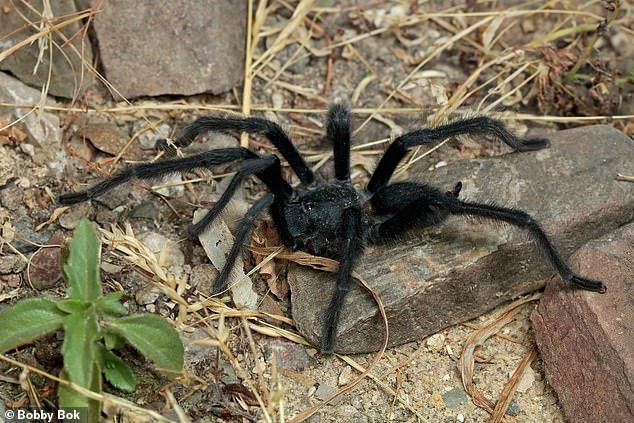They’re some of the most awe-inspiring creatures in the animal kingdom.
But if these spiders weren’t already extraordinary enough, scientists have just discovered they boast another impressive feature.
Four new species of tarantula have been identified in the Arabian Peninsula and the Horn of Africa – and they’ve evolved the longest genitalia of their kind.
Rather than a display of dominance, experts believe their record-breaking appendages have developed to help them avoid being killed by females during mating.
‘Based on both morphological and molecular data, they are so distinct from their closest relatives that we had to establish an entirely new genus to classify them, and we named it Satyrex,’ said Dr Alireza Zamani of the University of Turku, who led the study.
This name is a combination of two words – ‘Satyr’, which is a part-man, part-beast figure from Greek mythology with exceptionally large genitalia, and the Latin word ‘rex’ which means king.
‘The males of these spiders have the longest palps among all known tarantulas,’ Dr. Zamani said.
Palps – which look like two legs at the front of the body, near the face – are the specialized appendages used by male spiders to transfer sperm during mating.

A male Satyrex ferox pictured in Oman. Experts said the males of these spiders have the longest palps among all known tarantulas

A female Satyrex ferox. Scientists believe the males have developed such long palps to help protect them during sex with the highly aggressive female

The length of the male palps from different species. Figure C shows the palps belonging to Satyrex ferox
Satyrex ferox, the largest of the four new species, has a legspan of about 14 cm (5.5 inches) and a male’s palp can reach a length of 5 cm (2 inches).
This makes it almost as long as its longest legs, the researchers said.
‘This species is highly defensive’, Dr Zamani added.
‘At the slightest disturbance, it raises its front legs in a threat posture and produces a loud hissing sound by rubbing specialized hairs on the basal segments of the front legs against each other.
‘We have tentatively suggested that the long palps might allow the male to keep a safer distance during mating and help him avoid being attacked and devoured by the highly aggressive female.’
The name ferox, therefore, was chosen because it means ‘fierce’.
As for the others in the group, the researchers named S. arabicus and S. somalicus after their respective regions of origin.
Meanwhile S. speciosus gets its name from its bright and beautiful coloration.

A Satyrex arabicus male, from Saurdi Arabia. This species, which also has long palps, was named after its region of origin

The Satyrex speciosus, from Somaliland, gets its name from its ‘bright and beautiful’ colouration

Satyrex ferox’s habitat in Oman. The four new species have been identified in the Arabian Peninsula and the Horn of Africa
Read More
Moment a tarantula releases an oozing egg sac that contains more than 1,700 spiderlings is captured in rare video

The new genus also includes an older species, S. longimanus, originally discovered in Yemen in 1903 and previously placed in a different genus.
All members of the new genus are fossorial, which means they live underground.
They can mostly be found in burrows at the base of shrubs or between rocks.
The study, published in the journal ZooKeys, is called ‘Size matters: a new genus of tarantula with the longest male palps’.
